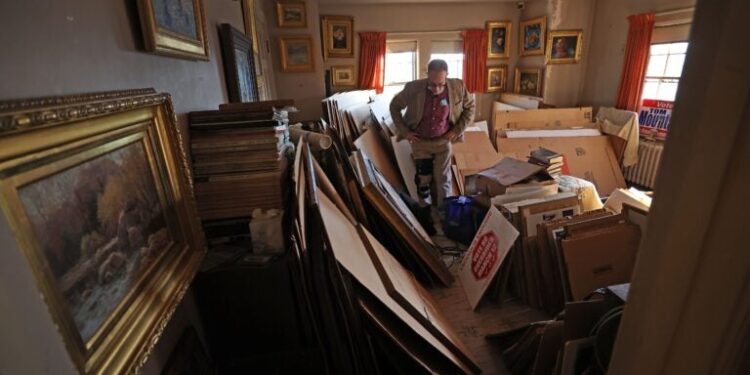The Boston Globe
“If you’re implying my mother authorized someone to take away 100 valuable artworks, I would ask you to seek medical help,” says her son.
NEWTON — It didn’t take long for Charlie Vogel to realize something was off about the painting he saw listed online by a small auction house in Essex.
As an art dealer who specializes in 19th-century White Mountain artists, Vogel immediately recognized Samuel Lancaster Gerry’s landscape of New Hampshire’s Franconia Notch. He’d admired the watercolor many times before at the Newton home of his longtime friends Sam and Sheila Robbins, whose vast collection is particularly strong in White Mountain landscapes.
Sam Robbins died in 2016, but Vogel was certain of one thing: “Sheila would never sell that painting.”
His suspicions grew as he browsed deeper into the online catalog, spotting numerous other paintings from his friend’s collection.
“That can’t be right,” Vogel recalled thinking to himself last September. “The whole thing seems screwy.”
A quick call to Sheila confirmed his suspicion: As far as she knew, all her paintings were stored safely upstairs.
“Charlie, I don’t understand it,” Robbins, 92, recalled telling her friend. “It can’t be: Those are my paintings.”
But there they were, online and ready for auction. The family quickly arrived at a conclusion.
“Guess what?” Jonathan Robbins recalled telling his mother. “You’ve been robbed by our contractor.”
Following a months-long investigation, detectives with the Newton Police Department have charged Brandon Campbell with three counts related to the unlawful removal and sale of approximately 100 paintings from Robbins’s home. According to an incident report, police further allege that Campbell used a forged signature on a false receipt to sell the paintings to a collectibles shop in downtown Boston.
At an arraignment earlier this month, Campbell pleaded not guilty to the charges, which include larceny from a building, utter false writing, and forgery of a document. He later posted bail at $500.

Campbell, who runs B&G Hoarding & Restoration Specialists, a junk-removal company in Roslindale, declined to comment prior to the hearing.
But attorney Dennis McMahon, who is representing Campbell, denied the charges, saying in an interview that his client had a contract with Robbins to remove junk and other damaged items from the property.
“He didn’t have intent to steal anything; he was disposing of damaged property,” said McMahon, who compared Campbell’s business to 1-800-GOT-JUNK. “The contract had a provision that allowed Mr. Campbell, without prior authorization, to remove any items that were water-damaged.”
The Robbinses dispute that claim.
“If you’re implying my mother authorized someone to take away 100 valuable artworks, I would ask you to seek medical help,” said Jonathan Robbins, who estimated they paid Campbell around $30,000 for the entire job. “It was basically a basement clean-out and an attic clean-out. It wasn’t supposed to be anything of value.”
During the course of their 60-year marriage, Sam and Sheila Robbins made for unconventional collectors. The couple did not seek out paintings by well-known artists. They rarely attended art fairs. Rather, they sought their treasures in the region’s more obscure venues — old basements, attics, even an old horse stall on Beacon Hill — sometimes purchasing dozens of works by a forgotten artist for as little as $10 a painting.
“These paintings were beautiful, they looked like they might be permanent records of civilization, and they were cheap,” Sam Robbins told the Globe in 2016. “If we didn’t preserve them, who would?”
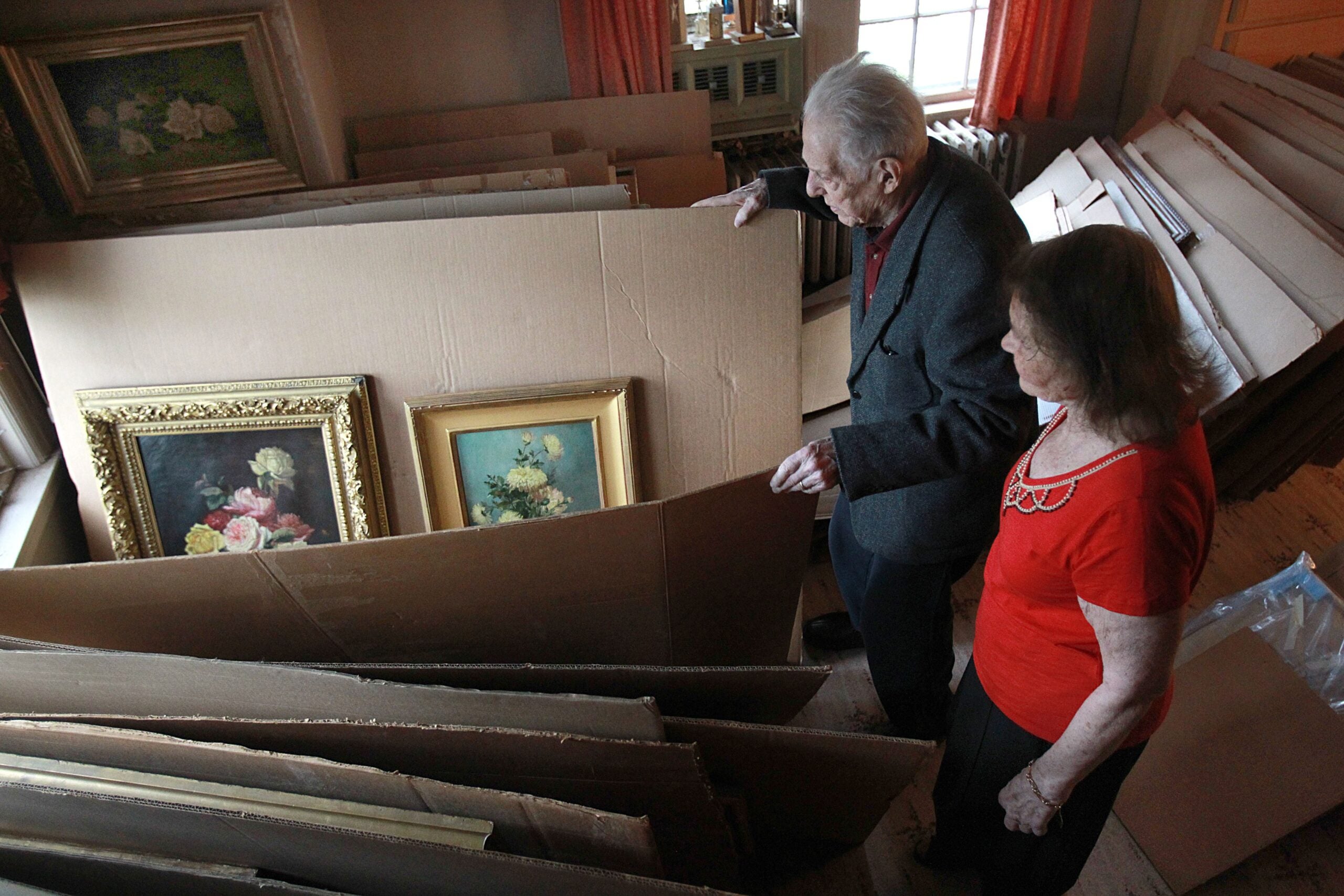
All told, the Robbinses’ collection numbers around 1,000 artworks, a sprawling hoard of 19th- and early-20th century New England paintings that includes landscapes, still lifes, and modernist works. The couple frequently exhibited paintings from their collection over the years, and in 2016 they donated around 80 of their best artworks to the Peabody Essex Museum in Salem. Today, much of the collection is scattered throughout the home, including hundreds that are stored on the floor of a pair of upstairs bedrooms.
The rest of the house was similarly packed with stuff, and Jonathan Robbins said he first contacted Campbell after sewage water began pooling in the basement in the fall of 2022.
Campbell began work that October, clearing the basement of a lifetime’s worth of stuff: decades-old paper files, skis with leather straps, and 3-speed bicycles, much of it contaminated by the water.
The family was pleased with the company’s work at the time, later expanding the project to include debris removal from the attic. Family members added that they liked Campbell, who also runs a luxury car rental service, and Jonathan recalled that the junk-removal man would arrive at the job site in Maybachs, Corvettes, and BMWs.
“I felt I could trust him,” said Sheila Robbins. “He brought me coffee in the morning. Sometimes he brought me something to eat. They were very nice.”
The family gave Campbell a house key after Sheila was laid up with medical issues in Nov. 2022, later sharing the alarm code with him as well.
Nevertheless, there were a few red flags along the way, Jonathan said, such as when a concerned neighbor contacted the family last spring to say it looked like the crew was removing more than junk.
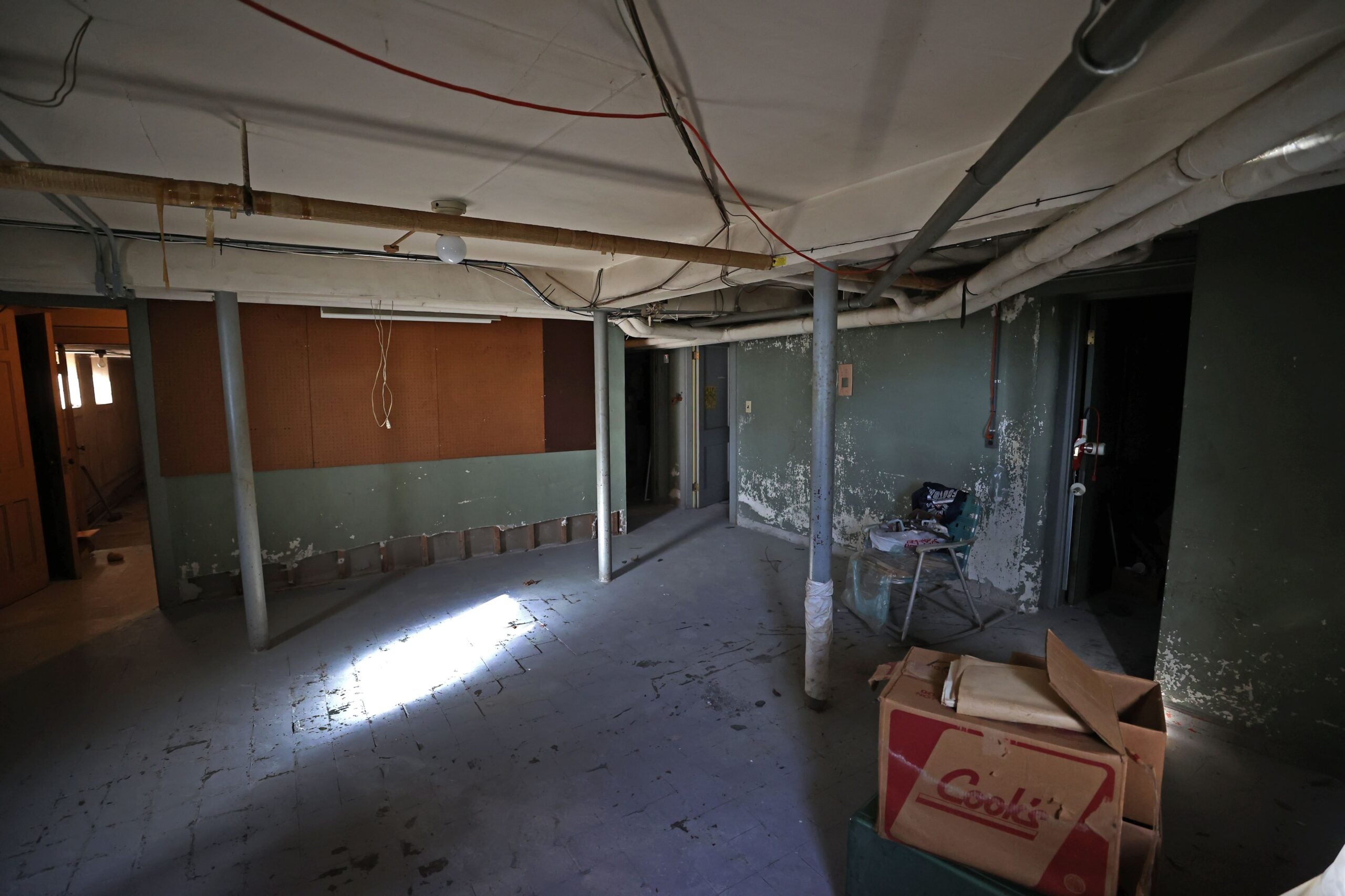
Jonathan, whose company, Perfect Note Audio, sells high-end stereo equipment, said he disregarded the neighbor’s concern at the time. He added that the contractors had pulled what looked like “a couple of city blocks” worth of stuff from the house.
“We didn’t notice anything missing,” he said, continuing that nothing seemed wrong in the home as the job wound up last spring. “All my audio equipment was there, as were 900 of 1,000 paintings.”
It’s not the first time Campbell has been accused of wrongdoing. According to an unredacted version of the incident report obtained by the Globe, “Campbell has 16 entries on his Board of Probation (BOP) record.” Those include an incident from 2018, when he was charged in New Bedford District Court with identity fraud and larceny over $250 from someone older than 60 or disabled. And last spring, around the time he was finishing up work with the Robbinses, Campbell was charged in Dedham District Court with larceny over $1,200 and failure to return leased property.
Both cases were ultimately dismissed.
Newton police now allege that Campbell removed more than 100 paintings without permission from Robbins’s home during the course of his work there.
According to the incident report, Campbell sold approximately 114 paintings to Colonial Trading Company, a collectibles shop in Downtown Crossing. The report states that the shop’s owner, Louis Chorney, told investigators he purchased the works from Campbell for around $10,000.
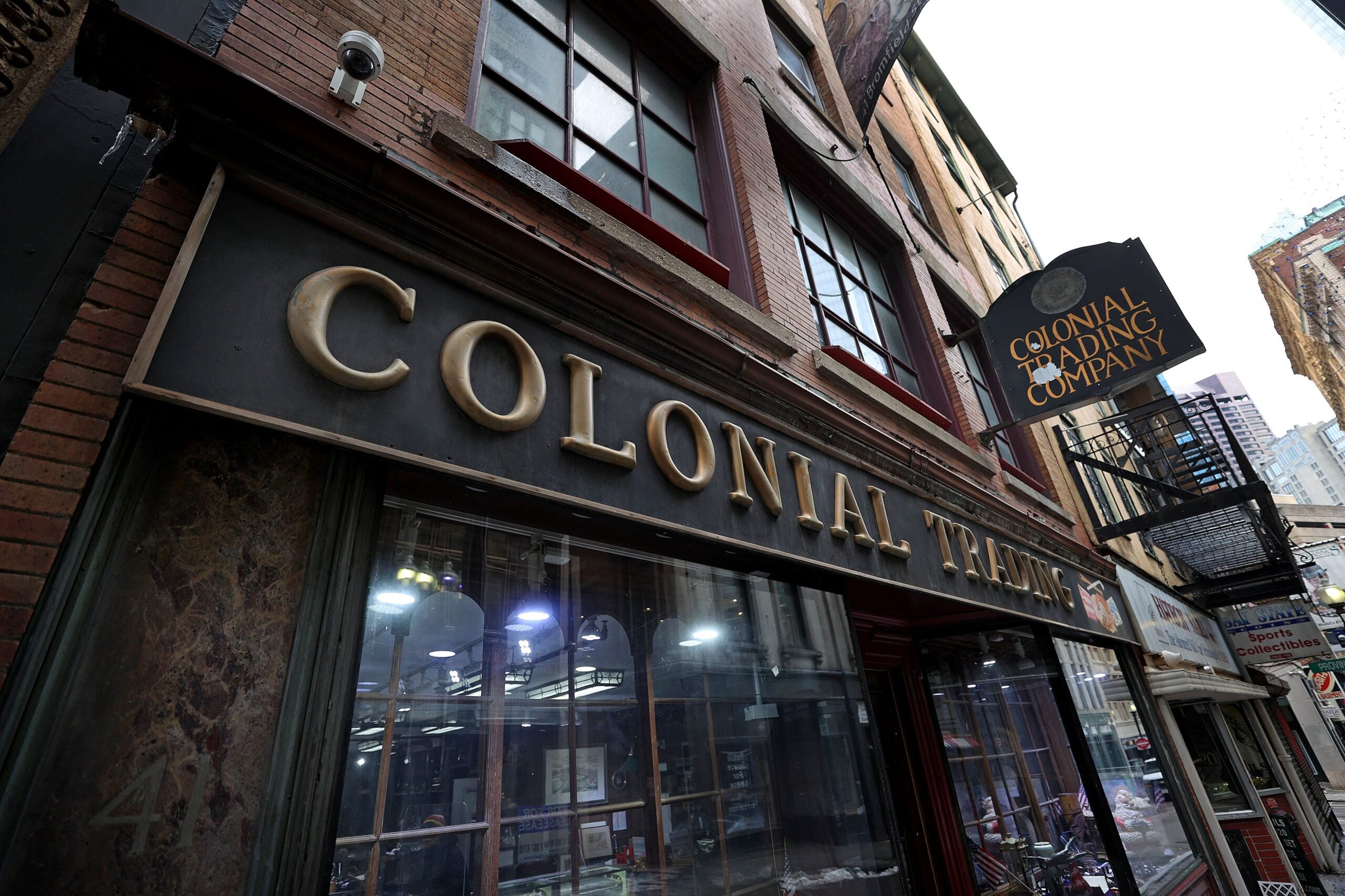
Chorney, who is not accused of any wrongdoing, declined to speak with the Globe.
Newton police detective Alexander Coletti wrote in the report that Colonial Trading also sent him a receipt that Campbell allegedly provided to the shop. The document, dated April 13, 2023, describes the “Removal of all damaged contents or items paintings/frames on floor space affected by water damage.”
Coletti then recounts how he spoke with Sheila Robbins again, comparing her B&G Hoarding receipts with the one Campbell allegedly provided Colonial Trading, a copy of which was obtained by the Globe.
“It is clear that the signature on the document Mr. Campbell provided to the Colonial Trading Company does not match Ms. Robbins signature,” he wrote, adding it “appears to be forged.” “Ms. Robbins also confirmed that she has never seen the document Mr. Campbell provided to the Colonial Trading Company.”
Defense attorney McMahon disputed that Campbell forged Robbins’s signature, arguing that it is actually someone else’s name entirely.
“The other signature does not purport to be Sheila’s,” said McMahon, who added Campbell provided Colonial Trading the receipt only to show he got the paintings “off a job” and was authorized to possess them.
McMahon does not dispute that Campbell took the artworks. He argues his client was only fulfilling his contract to remove damaged items from the home. How he chose to dispose of them was his concern.
“Campbell is not a connoisseur of art; they were just things that were damaged,” said McMahon, who called it a “civil matter.” “Brandon got ownership because they were damaged goods that he had the authority to remove because of his contract with Sheila.”
The Robbinses don’t buy it.
“How could it be water-damaged if it was in my hallway on an oriental rug up against a beautiful mahogany rail?” asked Sheila Robbins. “That’s a total lie. They were on my second floor, and they were stacked up.”
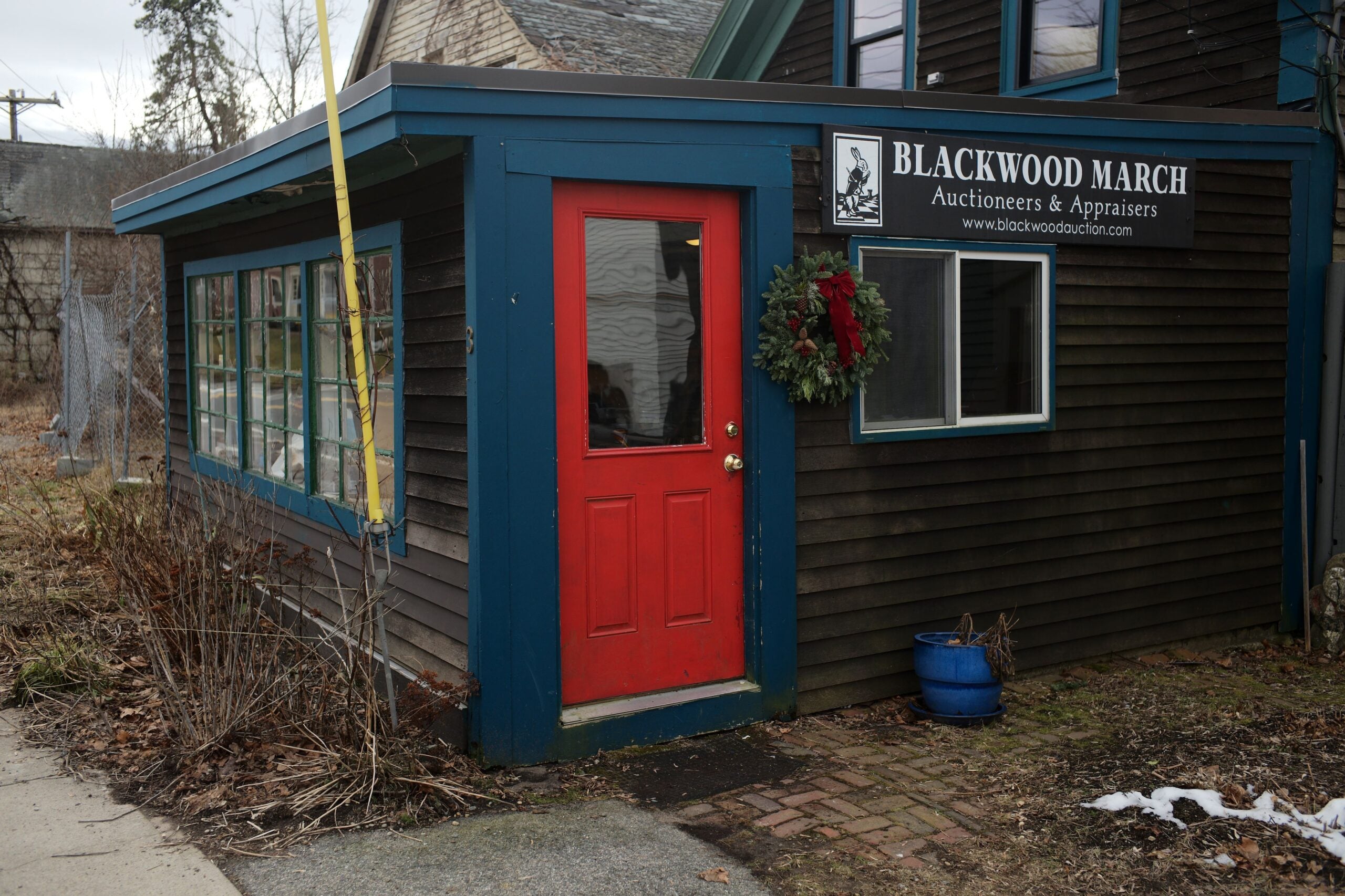
According to the incident report, Chorney later consigned at least 22 of the paintings to Blackwood March Auctioneers, the Essex auction house where Vogel spotted them in an online sales catalog.
Auctioneer Michael March, who is not accused of any wrongdoing, declined an interview request.
The report states that March promptly removed the paintings from the website and began returning them to Colonial Trading.
Following the arraignment, Jonathan Robbins headed to a nearby storage unit he’d rented in Newton. He was there to meet a pair of men hired by Chorney to return the artworks to the family.
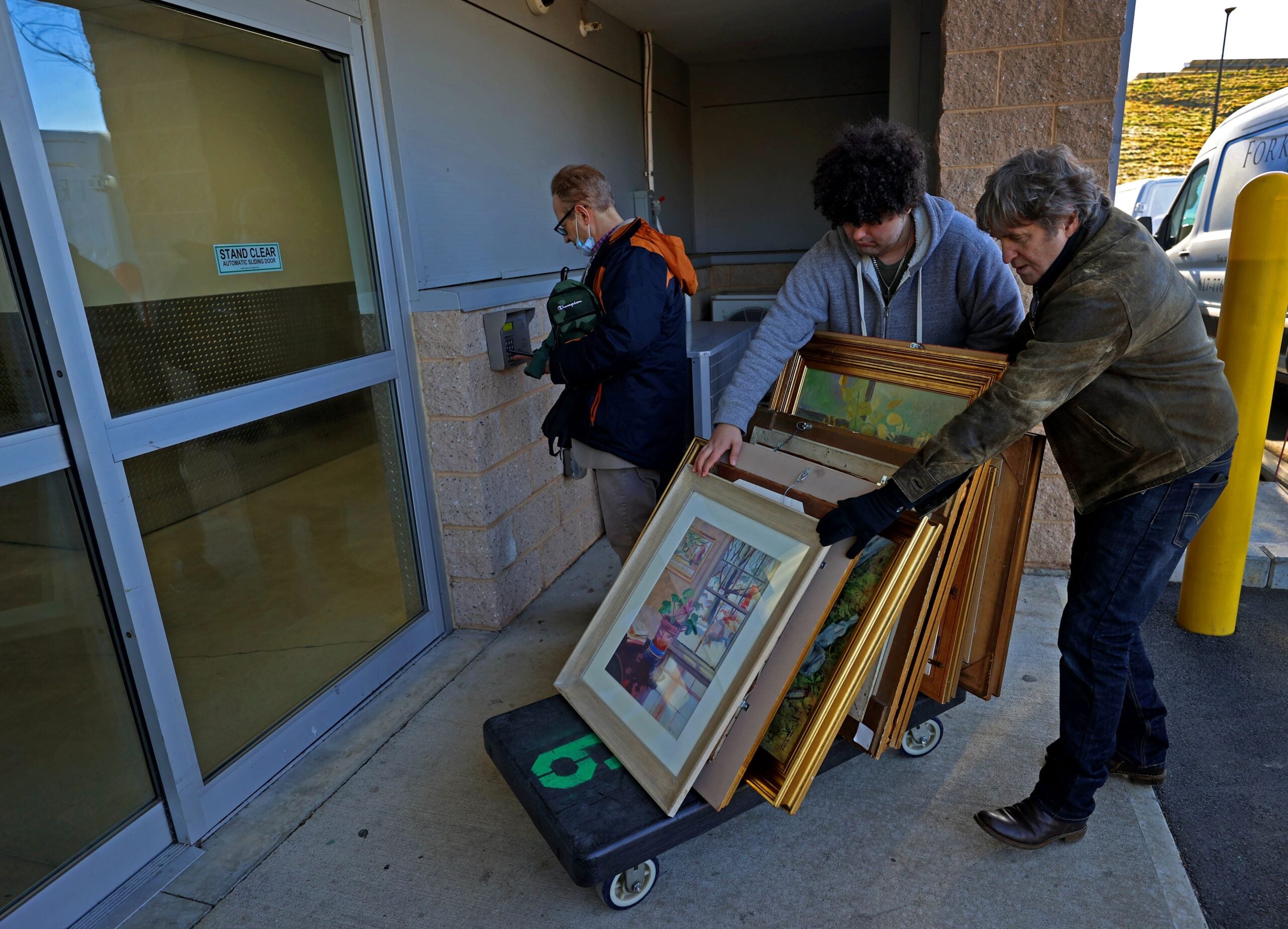
Once at the entrance, the men began unloading dozens of paintings they’d crammed into the rear of an old Honda minivan. Piling the artworks onto a handcart, they trundled their way up to the empty storage locker, stopping periodically as frames began to slip or the cart bumped into a corner.
“Do you see any water damage?” asked Robbins as he inspected the returning artworks, none of which showed signs of damage.
After they’d deposited the works in the storage cage, the party headed back downstairs for another load. Robbins paused for a moment as he closed the door, ultimately deciding to lock the unit.
He’d only be gone for a moment.


